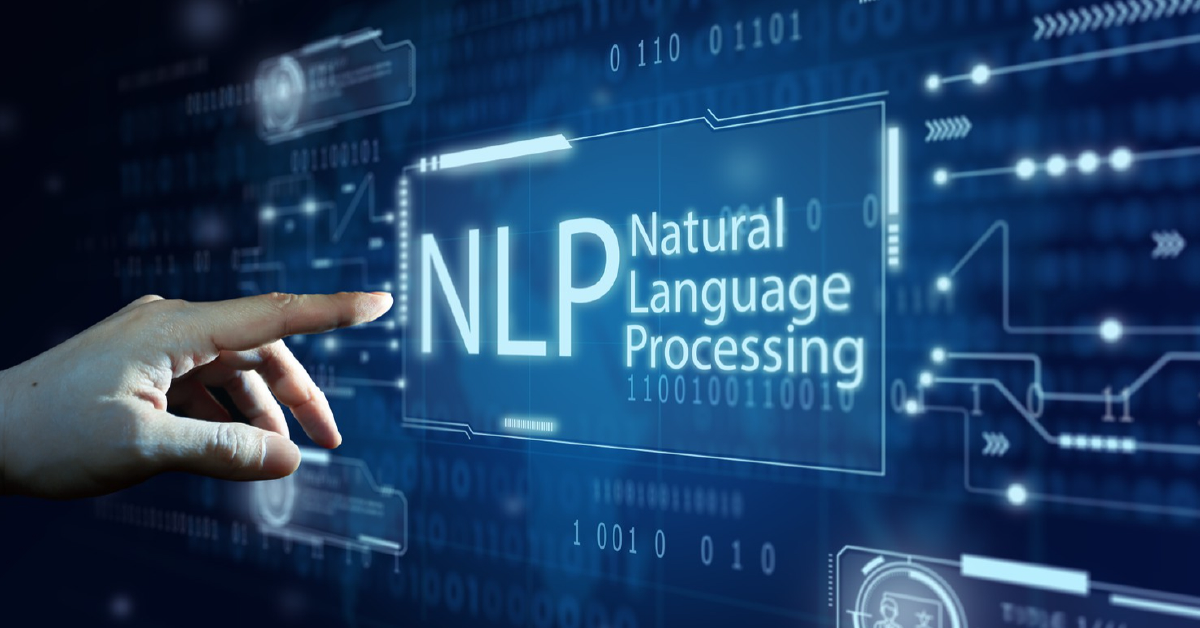AI’s Natural Language Processing and Machine Learning Capabilities

4 min read
Natural language processing (NLP) in AI is a necessity for our daily lives, both at home and at work. We use voice commands to control our smartphones, virtual assistants in our homes, and even our cars without giving it much attention. NLP and Machine Learning (ML) are will us by voice-activated programs. NLP is revolutionizing how we work, live, and play in addition to making our lives easier.
The Duty of Machine Learning’s in NLP
Recent advances in the domains of machine learning and natural language processing have made them significant subfields of artificial intelligence. Making an artificial agent into an artificial “intelligent” agent depends heavily on machine learning and natural language processing. Because of improvements in natural language processing, an artificially intelligent system can take in more information from its surroundings and respond to it in a way that is user-friendly.
Deep Learning, Machine Learning, and NLP
Automatically extract, classify, and label pieces of text and voice data using computer algorithms combined With Machine Learning And Deep Learning Models. Then, Statistical natural language processing in AI Assigns a Statistical Likelihood to Each potential interpretation of those elements. Currently, deep learning models and learning methods based on convolutional neural networks (CNNs) and recurrent neural networks (RNNs) allow NLP systems. To “learn” as they go along and extract ever-more-accurate meaning from massive amounts of unlabeled, unstructured text and voice data sets.
Some Important NLP Techniques
A subfield of artificial intelligence called “Natural Language Processing” (NLP) is concerned with how computers and human language interact. NLP techniques enable machines to understand, interpret, and generate human language, allowing for various applications like language translation, sentiment analysis, chatbots, and more. Here are some essential NLP techniques:
- Tokenization
- Part-of-Speech Tagging (POS)
- Named Entity Recognition (NER)
- Sentiment Analysis
- Word Embedding’s
- Machine Translation
- Text Summarization
- Information Extraction
- Text Generation
These are just a few examples of NLP techniques. As NLP continues to advance, new techniques and models are developing, enhancing the capabilities of language processing systems. And opening up more opportunities for innovative applications in various domains.
How NLP And ML Can Detect Something
NLP (Natural Language Processing) and ML (Machine Learning) are closely related fields, and they are often used together for various tasks, including detection tasks.
- NLP plays a crucial role in the early stages of the pipeline. That data preprocessing, feature extraction, and sometimes in feature engineering.
- ML models then take the extracted features as input and learn patterns and relationships from the data to perform the detection task.
- The choice of NLP and ML techniques depends on the specific task and the available resources. Experimentation and iteration are common in these fields to achieve the best results.
Let’s explore how NLP and ML can be combined to detect something.
Task Definition: First, you need to define the detection task you want to accomplish. It could be sentiment analysis, spam detection, named entity recognition, topic classification, intent detection, or any other task where you need to detect specific patterns or entities in text.
Data Collection: Gather a labeled dataset that contains examples of text with corresponding labels indicating the detection outcome (e.g., positive/negative for sentiment analysis, spam/not spam for spam detection, etc.).
Data Preprocessing: Clean and preprocess the text data as needed for your specific task. This might involve tokenization, lowercasing, stop word removal, stemming or lemmatization, and handling special characters.
Feature Extraction: NLP services can convert the preprocessed text data into numerical features that ML models can use. This step is essential because most ML models work with numerical representations. Techniques like Bag-of-Words, TF-IDF, or word embedding’s are commonly used for this purpose.
Model Selection: Choose an appropriate ML model based on the complexity of your detection task and the nature of your data. Common choices include logistic regression, support vector machines (SVMs), decision trees, random forests, gradient boosting, or deep learning models like recurrent neural networks (RNNs) or transformers.
Deployment: Once you have a satisfactory model. You can deploy it in your application or system to detect something in new, unseen text data.
Fine-tuning and Optimization (Optional): Based on the evaluation results, you may fine-tune your model, experiment with different algorithms, or adjust hyper parameters to improve performance.
Machine Learning’s Use in Natural Language Processing Applications
Machine learning and deep learning algorithms have been crucial in practically all of the applications of natural language processing, just as they were in the task of processing natural language. Due to the ease with which machine learning and deep learning algorithms may be implemented. And this is particularly true for deep learning techniques, there has been a recent resurgence in academic interest in these domains.
Chatbot Systems
One key application of NLP in customer service is chatbots and virtual assistants. Conversational agents or dialogue systems known as chatbots attempt to start a conversation with the user. Voice or text can be used for this conversation. Chatbot systems have gained popularity thanks to personal assistants like Amazon’s Alexa and Google Assistant. Which have also demonstrated how simple user engagement can be.
Systems for Resolving Questions
A question-answering system, as its name suggests, aims to respond to queries from users. The thin line separating a dialogue system from a question-answering system has become increasingly hazy in recent years. Most frequently, a chatbot system handles the question-answering function, but the reverse is also true. Therefore, it is likely that the research projects that promise to create a chatbot system will also create a system for answering queries.
Systems for Retrieving Information
Another significant use of natural language processing is information retrieval, which looks for pertinent information. Systems like chatbots and question-answering interfaces are supported by information retrieval systems.
Automatic Translation
With little to no human intervention, a machine translation system aims to convert a text from one language to another. One of the best applications of the machine translation technology is Google Translate.
Conclusion
In conclusion, AI’s Natural Language Processing (NLP) and Machine Learning (ML) capabilities have revolutionized the way we interact with and understand human language. Using NLP, machines can understand, decipher, and produce natural language, opening up a wide range of applications in various fields. ML, on the other hand, empowers AI systems to learn patterns and relationships from data, making them capable of handling complex language tasks.
Published: August 7th, 2023





